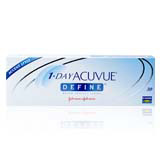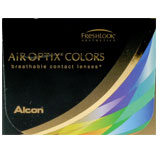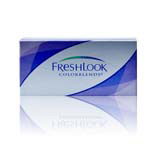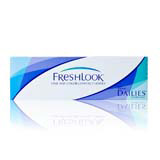Coloured Contact Lenses
People may need to alter the colour of their eyes for different reasons. In such instances, coloured contact lenses offer a viable and attractive option. When buying coloured contact lenses there are dozens of different brands that people can choose to consider. Popular options include contact lenses made by;
Coloured contact lenses can be easily ordered online and are available as daily disposable or daily wear options. The exact cost will be determined by the brand, style and features of the lens. Contact Lenses Online offers a broad range of coloured contact lenses. Buyers can enjoy discounts or rebates available courtesy dozens of different Australian health funds if the contact lenses purchased have a prescription.
Choose the right colour for your skin tone. Unless you need to buy a particular colour for a specific function, it is advisable that you pick a colour that fits with your hair colour and skin tone. Popular brands such as Freshlook and ACUVUE have online tools that you can use in mixing and testing different colours based on your skin. The following are some of the popular blends.
Choose a brand. Coloured contact lenses are made by dozens of manufacturers. Coloured lenses have different features included in their design. Your optometrist can perform a trial fitting in which you can try on the different colours available.
Choose your preferred option. Do you want coloured contact lenses built for daily wear or disposable options? Disposable contact lenses are affordable and offer a flexible alternative to people who only want to sample a different colour. Coloured contact lenses designed for everyday wear are a lot more durable and resilient.
Your optometrist will be on hand to help you choose the right replacement schedule which will be determined by different factors discovered during the examination. For instance, the eyes become irritated when the lens has too much protein deposits on it. People with eyes that produce a lot more lipids and protein are therefore likely to require lenses that are replaced frequently. Individuals with a known history of allergies may also be prescribed with lenses that require frequent replacement for the same reason.
Coloured contact lenses should not be worn if a person suffers from an ocular infection. They are also not advised for people with injuries on their eyelids or cornea, especially if the lens may aggravate the injury. Patients who have difficulties wearing, removing or caring for coloured contact lenses without some assistance may wish to reconsider the decision of buying them.
Tweet
- CooperVision
- Bausch and Lomb
- Johnson & Johnson VisionCare.
- CIBA VISION (Freshlook)
Coloured contact lenses can be easily ordered online and are available as daily disposable or daily wear options. The exact cost will be determined by the brand, style and features of the lens. Contact Lenses Online offers a broad range of coloured contact lenses. Buyers can enjoy discounts or rebates available courtesy dozens of different Australian health funds if the contact lenses purchased have a prescription.
Overview
There are two major types of coloured contact lenses. These are opaque lenses and enhancement tint lenses.- Opaque lenses are designed to create dramatic colour changes with the eyes. They can be found in different shades and colour including grey, green, blue, brown and violet. People who wear opaque coloured contact lenses are often looking to completely change the natural colours of their eyes for aesthetic reasons.
- Enhancement Tint: Enhancement tint coloured contact lenses are not designed to drastically alter the colour of the eyes but merely to enhance them. These lenses are lightly tinted and are bought to complement a person's natural colour. Enhancement tint lenses are a common option with people who have lightly coloured eyes.
Steps to Choosing the Right Coloured Contact Lenses
Visit an optometrist. It is important that you that you have your eyes examined before you buy coloured contact lenses. An eye examination will reveal if you have any ocular issues that need to be addressed. You will also be able to discover the right prescription for your eye needs. Here at Contact Lenses Online we require that you use a prescription to buy coloured contact lenses, even if they are non corrective.Choose the right colour for your skin tone. Unless you need to buy a particular colour for a specific function, it is advisable that you pick a colour that fits with your hair colour and skin tone. Popular brands such as Freshlook and ACUVUE have online tools that you can use in mixing and testing different colours based on your skin. The following are some of the popular blends.
- Olive Skin: Individuals with olive skin often prefer to choose lenses in bright shades to complement their skin. Good examples of colours to consider include grey, honey and hazel. Green contact lenses are also a popular choice with this skin tone. Blue contact lenses (with the possible exception of navy blue) are however not as effective.
- Dark and Milk Chocolate skin: For dark or milk chocolate skin, coloured contact lenses in shades of blue and green can be considered. However, it is important that buyers avoid shades that are too bright. Better results can be achieved with the use of darker shades. Lighter colours such as autumn or honey may also prove a useful match. Other colours for dark skin include amethyst and misty grey.
- Fair Skin: Coloured contact lenses in shades of gray and blue are a popular choice with fair skin tones. Other popular choices include turquoise and shades of violet.
Choose a brand. Coloured contact lenses are made by dozens of manufacturers. Coloured lenses have different features included in their design. Your optometrist can perform a trial fitting in which you can try on the different colours available.
Choose your preferred option. Do you want coloured contact lenses built for daily wear or disposable options? Disposable contact lenses are affordable and offer a flexible alternative to people who only want to sample a different colour. Coloured contact lenses designed for everyday wear are a lot more durable and resilient.
Your optometrist will be on hand to help you choose the right replacement schedule which will be determined by different factors discovered during the examination. For instance, the eyes become irritated when the lens has too much protein deposits on it. People with eyes that produce a lot more lipids and protein are therefore likely to require lenses that are replaced frequently. Individuals with a known history of allergies may also be prescribed with lenses that require frequent replacement for the same reason.
Coloured contact lenses should not be worn if a person suffers from an ocular infection. They are also not advised for people with injuries on their eyelids or cornea, especially if the lens may aggravate the injury. Patients who have difficulties wearing, removing or caring for coloured contact lenses without some assistance may wish to reconsider the decision of buying them.
Tweet
 Repeat Last Order
Repeat Last Order Track Order
Track Order



